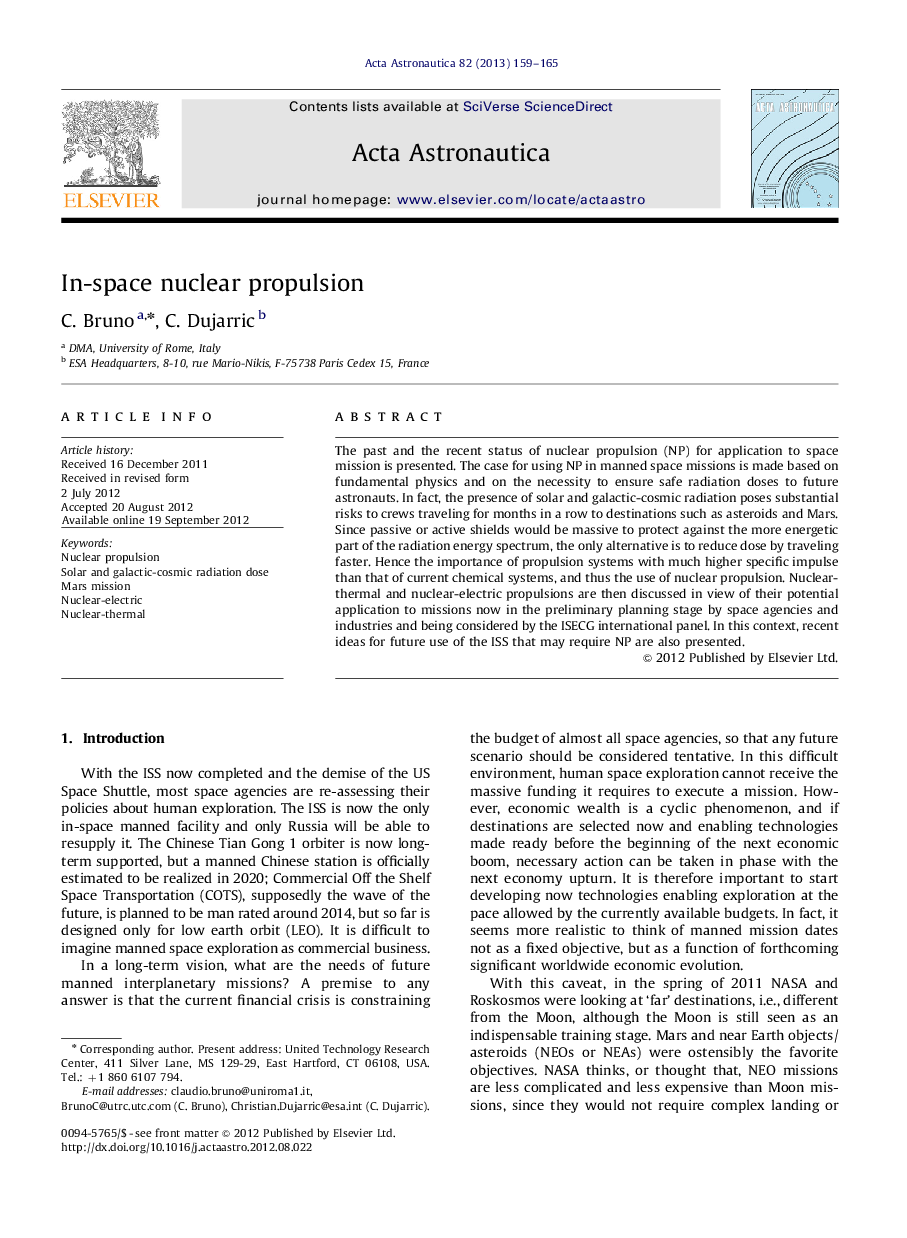| Article ID | Journal | Published Year | Pages | File Type |
|---|---|---|---|---|
| 1715161 | Acta Astronautica | 2013 | 7 Pages |
The past and the recent status of nuclear propulsion (NP) for application to space mission is presented. The case for using NP in manned space missions is made based on fundamental physics and on the necessity to ensure safe radiation doses to future astronauts. In fact, the presence of solar and galactic-cosmic radiation poses substantial risks to crews traveling for months in a row to destinations such as asteroids and Mars. Since passive or active shields would be massive to protect against the more energetic part of the radiation energy spectrum, the only alternative is to reduce dose by traveling faster. Hence the importance of propulsion systems with much higher specific impulse than that of current chemical systems, and thus the use of nuclear propulsion. Nuclear-thermal and nuclear-electric propulsions are then discussed in view of their potential application to missions now in the preliminary planning stage by space agencies and industries and being considered by the ISECG international panel. In this context, recent ideas for future use of the ISS that may require NP are also presented.
► Fundamental nuclear force produces the highest specific impulse. ► Mars missions powered by chemical propulsion result in large doses to crew. ► Only nuclear propulsion can shorten manned interplanetary missions.
